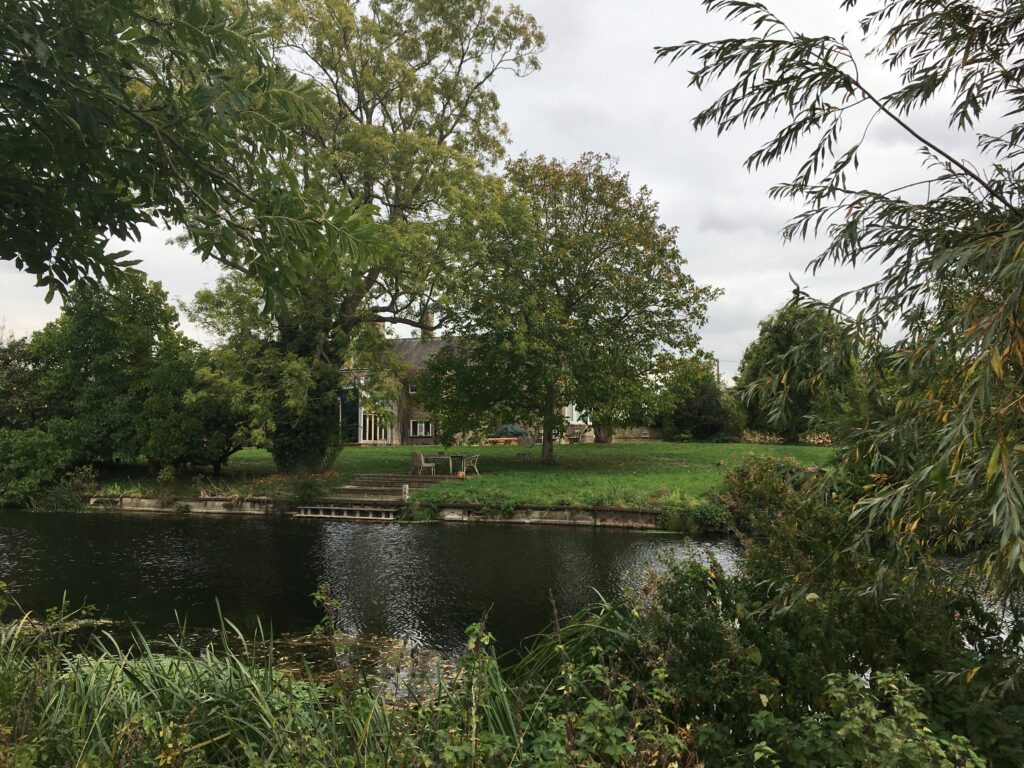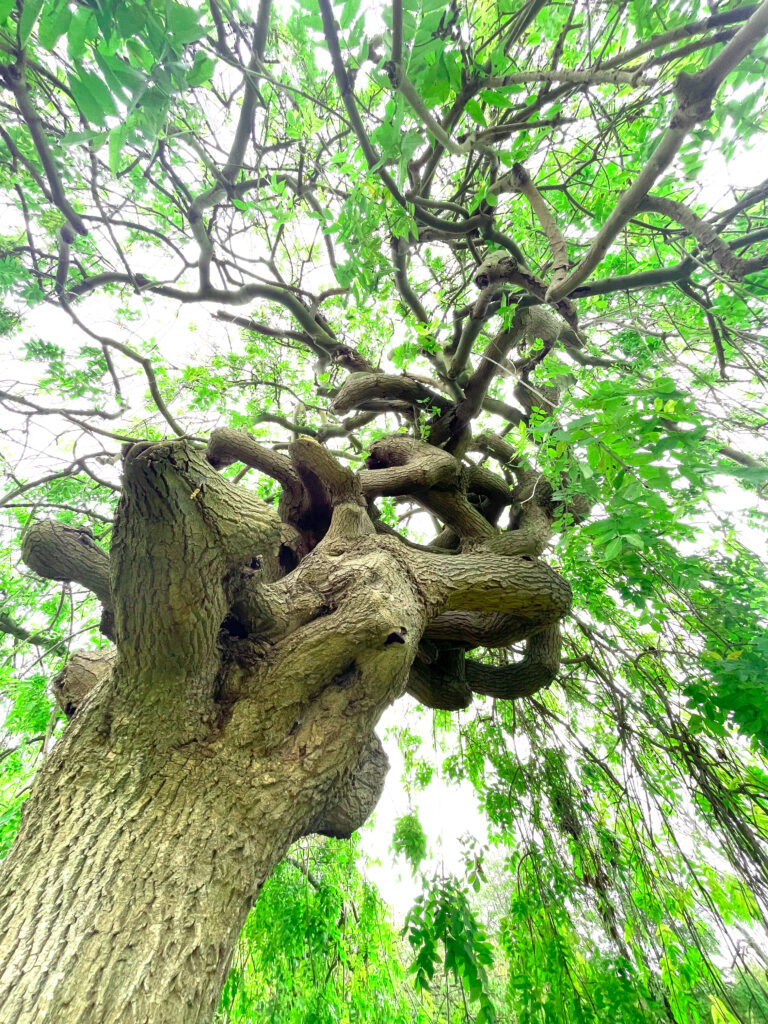Cecilia Lucie Leeds Saunders was born in Clayhithe in 1889, the youngest of four girls. Her father had been born at Eye Hall and her uncle lived in The Lodge. Lucie (as she was called by everyone) wrote a Memoir of her life as a child at Clayhithe, her childhood in Cambridge, her first marriage in 1915 and her adventures in Art School in London in the 1920s where she became caught up in the world of the Bright Young Things. Her first marriage ended and she lived the life of a Bohemian artist socialising and partying with Basil Taylor, Robert Bevan, Cedric Morris and Stanley Spencer. She eventually set up home with John Aldridge and spent time with Robert Graves in Majorca. She and John Aldridge gravitated towards the artists’ colony that was establishing itself in Great Bardfield in Essex with Eric Ravilious, Tirzah Garwood and Edward and Charlotte Bawden. John Aldridge was a painter, Lucie developed her interest in rug making. The Memoir finishes as Lucie and John settled into their alternative lifestyle at The Place in Great Bardfield in 1933. From the postscript it is clear that the Bohemian existence and partner swapping continued and it is hard to keep up with who was sleeping with who! This life continued until about 1960 when Lucie finally left Great Bardfield and moved to Gresham Road in Cambridge where she lived until she died in 1974. The Great Bardfield artists were prolific with Ravilious’s landscapes, etchings, woodcuts – he was the first war artist to be killed in WWII and is the subject of the recent film Drawn to War. Edward Bawden specialised in woodcuts. John Aldridge was known for his portraits, book illustrations, dust jackets, landscapes. The Fry Gallery in Saffron Walden has a good collection of the work of the Great Bardfield Artists including one of Lucie’s rugs.
The early chapters of the Memoir give a delightful account of life in Clayhithe at the end of the 19th C and early years of the 20th C. She recounts a story her older sister used to tell to frighten her …. “A bear would arrive at Waterbeach station, it had just got out of the train on its way to Clayhithe … now it has reached The Willows… now it is reaching the Marsh … now it is crossing the bridge over the river and soon it will be passing the cottages… now it is coming up the back-kitchen stairs and has crept in and is under the bed”!

“Our house at Clayhithe stood uphill from the River Cam, which ran all along one side of the garden.” She spoke of games they played with the croquet ball – ”…occasionally one of the balls would roll over the verge of grass by the river and sink beyond recovery into the Cam mud….”, “Clayhithe had a most beautiful garden, a long expanse of lawns leading finally to an orchard and kitchen gardens. There were tall box hedges making a double serpentine called “Lovers Walk”. People from a distance came specially to see as much of the garden as they could from the road or the river. …there was a weeping ash in front of the house where meals were brought out to us and we half lived under it. During summer it makes a large umbrella and my father had two hoop-like shapes cut so that he could see the road to Horningsea and also the eights practising on the river on their way to the Bridge Inn where they stopped for tea. All this beauty was a wonderful setting for us girls to be brought up in, and I look back on my childhood with infinite gratitude, the wonderful peace and security of those days with devoted parents, devoted servants and plenty of them, and governesses we generally adored.”.

Robjn Cantus has donated a copy of the book to Horningsea Church so if you want to read more about Clayhithe, Lucie’s wild partygoing and the Great Bardfield artists you can borrow it at any time!
